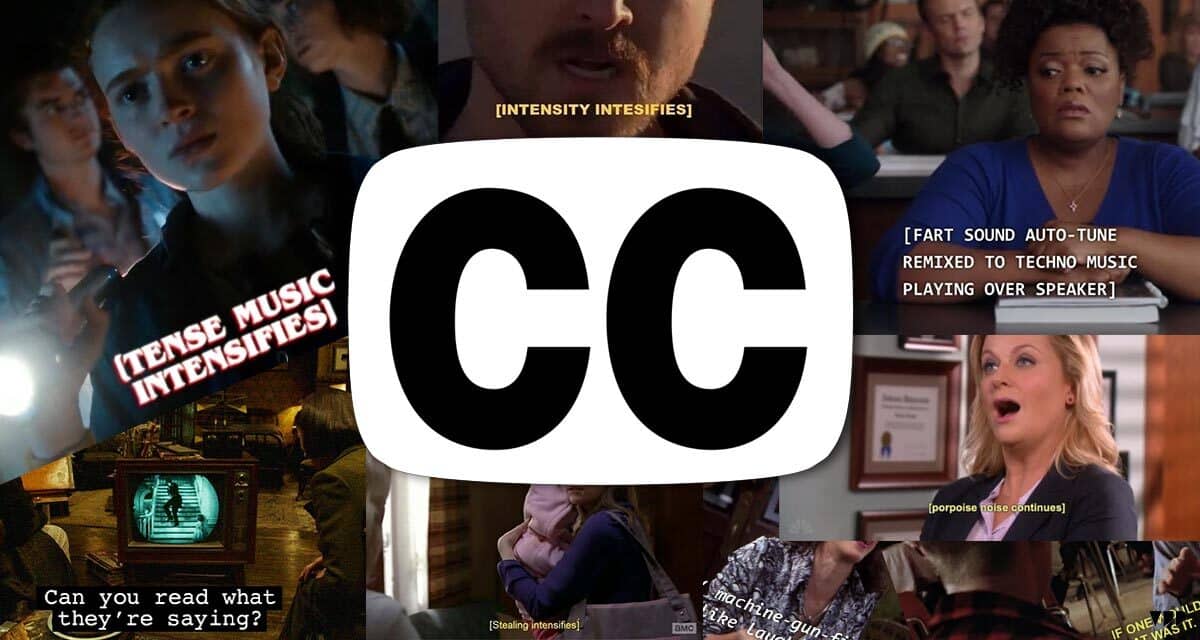Everyone’s watching television & movies with subtitles
Do you use subtitles? Same. Captions and subtitles are not to be used interchangeably, despite what some might think. Subtitles were designed for viewers who can hear the audio but who do not understand the language spoken, whereas captions were designed for viewers who are unable to hear the audio.
In considering why these tools were created, closed captioning and subtitles are increasingly being used by varying age groups for reasons that may (or may not) surprise you.
‘Who is Opting In?
When the internet became obsessed with Stranger Things Season 4 (especially Volume 2), fans started taking to Twitter and TikTok to share screenshots of some pretty wild and creative subtitles. As awesome as they were, one big mystery still remains…who exactly is opting in?
Here’s a breakdown…
- According to Stagetext and Sapio Research, four out of five viewers aged 18-25 said they use subtitles all or part of the time while less than a quarter of those aged between 56 and 75 ( Gen X and Baby Boomers) are almost twice as likely to say they are d/Deaf or hard-of-hearing.
- Netflix has also reported that more than 80% of subscribers use subtitles or closed captions at least once a month and that U.S. viewing of non-English titles has increased by over 70% since 2019.
- The language learning app and e-learning platform Preply reports that 53% of Americans are using subtitles more often than they used to, and some even think subtitles should be used by default.
Older people often feel like subtitles require an “extra concentration level” when watching foreign-language productions, Stagetext’s chief executive Melanie Sharpe said in an interview with the BBC. Apparently watching videos on social media along with TV shows like Squid Game and Pachinko have proven to researchers that younger people don’t think reading while watching is extra work.[/vc_column_text][]Everyones doing it
Other studies show that watching content on smartphones has increased the percentage of those who watch with subtitles. Bet you could have guessed that though since many people watch online content in public places — 57% of Americans say they consume content on mobile devices while in public, and a whopping 74% of Gen zers said they are watching content on the go.
Some studies suggest that subtitles and closed captions have become more popular due to the rise of second-screen usage. “The main reason they do it is so they can flick their eyes up and read ahead, then take in the whole scene quickly, and look back down at their phone, or whatever second screen they have,” a respondent told The Telegraph.
Captions both improve our comprehension of what we’re watching and also allow us to multitask. It sounds counterintuitive, but studies prove otherwise. Research from 3PlayMedia proved that it’s cognitive reinforcement and that reading the text while hearing the words at the same time, it helps you remember better.[/vc_column_text][]When people were asked what their main reason for using subtitles was, they said:
- Nearly 1 in 5 regularly use subtitles in order to learn a new language.
- 27% of Americans rely on subtitles to keep them focused on what they are watching while juggling the distractions of multiple screens, children, pets, work, the news, and more.
- Nearly 3 in 4 respondents claimed muddled audio from their content.
- 61% use them when accents are difficult to understand.
- 29% prefer to watch their content at home quietly, leaving subtitles on so as not to disturb roommates or family.
Do you see what I’m saying?
As the global demand for online media entertainment continues to increase, so will the number of people using subtitles and closed captions. In fact, while streaming platforms have been looking to combat slowing U.S. subscriber growth and churn, many have made major investments in international markets.
- Netflix reported that non-English language viewing in the U.S. has increased by over 70 percent since 2019, a huge leap.
- In fact, 50% of European Netflix and Amazon Prime subscribers’ viewing time could be spent watching non-English language content by 2030.
Subtitles and captions will continue to increase in popularity, and so while originally created for d/Deaf or hard of hearing persons, closed captions and subtitles will continue to be used for reasons other than hearing loss, benefiting the audience as a whole, not just those who require them for accessibility.
TOGETHER WITH CANVA
No design skills needed! 🪄✨
Canva Pro is the design software that makes design simple, convenient, and reliable. Create what you need in no time! Jam-packed with time-saving tools that make anyone look like a professional designer.


